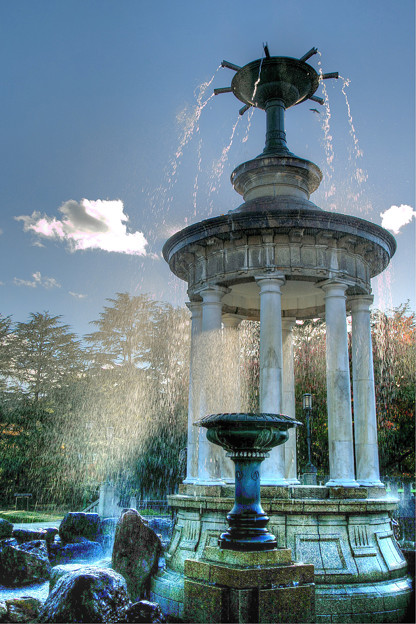Tsuruma Park in Nagoya was the first public park in the region. It was established in 1909.
The existing modern and classic buildings and monuments tell us many
stories related to the origin of this park and life in Nagoya in the
early 1900s.
The boy statue in front of us is one example.
He is frozen in the middle of doing calisthenics, called “rajio taiso”, which literally means “radio exercises”.
“Rajio taiso” has a long history of 88 years, from the first
broadcast of exercise routines over the radio by the Japan Postal
Insurance Bureau.
“Rajio taiso” is a kind of rhythmic exercise to music on the radio.
The program starts at 6:30 in the morning every day and goes for 15
minutes.
The insurance bureau started this project so that people would be
more conscious of maintaining good health since the Japanese life
expectancy was quite low at that time. Strictly speaking the idea for radio broadcast
calisthenics came from the US.
The exercise consists of 13 different but easy movements to stimulate
almost all of your muscles -- even the inactive ones -- to get your
blood circulating.
It was included as a regular group routine at elementary and junior high schools.
Later, in the 1950s, it was aired on TV as well as on the radio
several times a day; it became very popular among adults at offices,
factories and also at many other workplaces.
Currently, it is reported that 20% of the entire population, or
around 27 million people, and 76% of elementary schools, still do radio
exercises.
Regardless of age, almost all Japanese people can
perform the 13
movements if they hear the music or sometimes simply by humming it.
Here in Tsuruma Park, somewhere between 100 and over 350 people,
usually seniors, gather around the Sougakudo bandstand for “rajio taiso”
every morning throughout the year.Tsuruma Park is the perfect place for
a “rajio taiso” gathering, and it has been this way for 50 years.
If you would like to join in doing “rajio taiso”, you don’t need to apply.
All you have to do is to get up early.

















